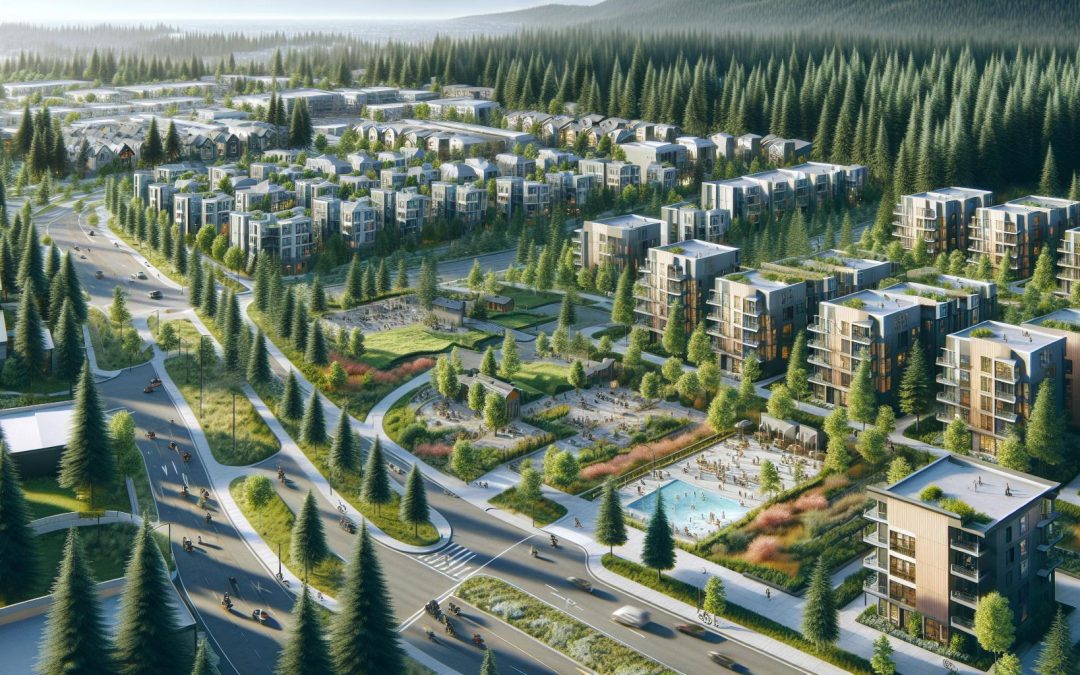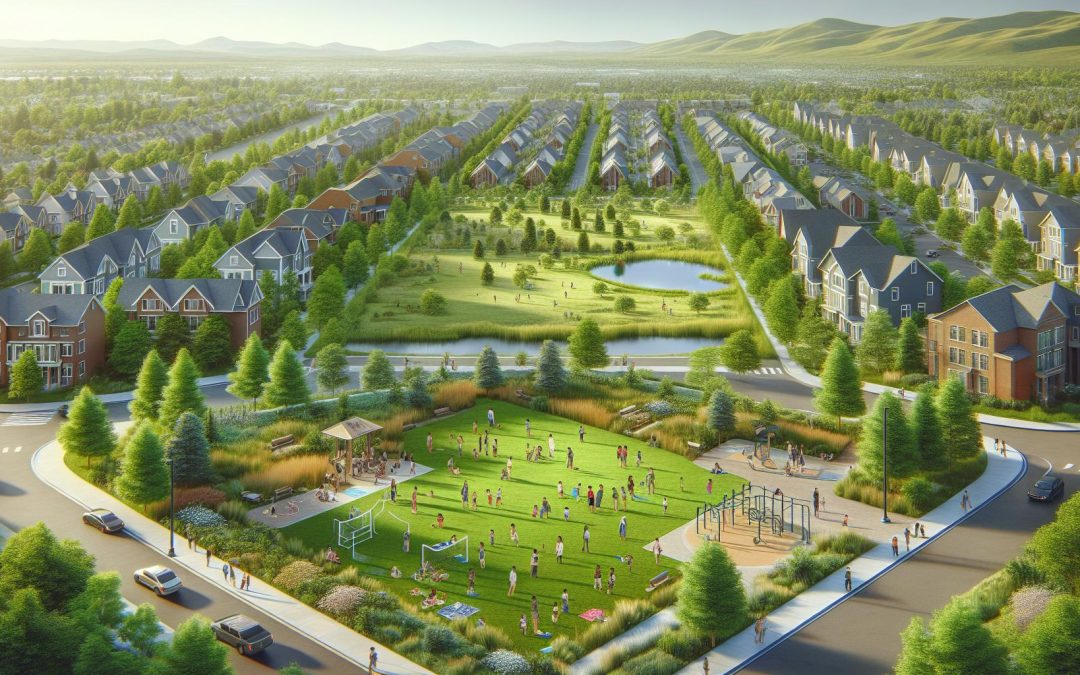Nestled between the bustling cities of Seattle and Bellevue, Sammamish offers a unique blend of rich history and forward-thinking innovation. As I stroll through its scenic parks and vibrant neighborhoods, I can’t help but feel a deep connection to both its storied past and its promising future.
From the early days of Native American settlements to the modern tech-driven community, Sammamish has always been a place of growth and transformation. It’s fascinating to see how the city balances preserving its heritage while embracing new opportunities. Join me as we explore how Sammamish honors its legacy and looks ahead to shape a brighter future.
Overview Of Sammamish
Sammamish, a city located between Seattle and Bellevue, offers a blend of historical richness and contemporary advancements. With a population of around 65,000, Sammamish maintains a small-town feel despite its proximity to two major urban centers. The city emphasizes preserving natural spaces, boasting numerous parks and protected areas, like Sammamish State Park and Pine Lake Park.
The historical roots of Sammamish trace back to its first Native American inhabitants. Artifacts and oral histories from tribes like the Snoqualmie and Duwamish reflect the area’s original cultural significance. Efforts to honor this heritage include public displays and educational programs about native history.
Modern Sammamish has grown into a residential haven. With high-quality schools and community-focused amenities, it attracts families looking for a balanced lifestyle. The public education system consistently ranks among the best in the state, providing a strong draw for parents prioritizing educational excellence.
In terms of infrastructure, Sammamish balances growth with sustainability. New developments incorporate eco-friendly designs, reflecting the city’s commitment to environmental stewardship. The city encourages green building practices and invests in renewable energy sources.
Furthermore, Sammamish supports a vibrant community life through local events and festivals. Annual events like the Sammamish Farmers Market and Fourth on the Plateau celebration foster community spirit and offer residents opportunities to engage with one another.
The local economy is robust, driven by a mix of small businesses and remote workers connected to tech hubs in Seattle and Bellevue. Many residents enjoy the convenience of working from home while still remaining close to major employment centers.
Overall, Sammamish provides a unique living experience that honors its past while embracing future advancements. This dual focus on heritage and innovation makes it an appealing place for both long-time residents and newcomers.
Historical Background
Sammamish’s vibrant history reveals a rich tapestry of cultural and developmental changes.
Early Settlements
The Sammamish area began as the home of the Snoqualmie and Duwamish tribes. These Native American communities relied on the lush surroundings for sustenance, fishing in local lakes and rivers and gathering resources from the abundant forests. Evidence of their presence remains through archaeological sites and artifacts. Names like Issaquah, nearby, reflect their influence on the region.
When European settlers arrived in the mid-1800s, they found an area ripe with natural resources. Logging quickly became a dominant industry; logs from the dense forests fueled growth in surrounding cities. Homesteads and small farms emerged, shaping Sammamish’s early landscape. By the late 19th century, a basic settlement infrastructure had developed, including roads and communal buildings.
Development Through The Decades
The 20th century saw Sammamish transitioning from rural outposts to suburban community. The arrival of railroads in the early 1900s facilitated transport and commerce, encouraging more settlers. By the 1950s, post-war prosperity and suburban sprawl reached Sammamish. Small farms gave way to residential developments as families sought tranquility away from urban centers.
Incorporated as a city in 1999, Sammamish experienced rapid population growth. Planned neighborhoods, robust schools, and parks emerged, catering to a growing community. By the 2000s, technology companies and remote work opportunities attracted professionals. The city’s development balanced modern amenities with natural preservation, reflecting its commitment to honoring history while embracing progress.
Cultural Heritage
Sammamish embraces its cultural heritage by preserving its traditions and landmarks. These elements connect residents with the city’s rich history.
Local Traditions And Celebrations
Sammamish enjoys vibrant local traditions and celebrations. The Sammamish Farmers Market operates weekly from May to September, offering fresh local produce, artisanal products, and live music. Each October, the Sammamish TeenFest engages youth with music, art, and tech-related activities. The Fourth on the Plateau celebration attracts families with fireworks, children’s activities, and food vendors, creating a festive atmosphere. Sammamish Days and Nights, held in August, showcases multicultural performances, craft booths, and diverse cuisines, emphasizing the city’s commitment to inclusivity. These events foster community spirit and enable residents to celebrate their shared heritage.
Legacy Landmarks
Sammamish maintains several legacy landmarks that reflect its historical significance. The Ebright Creek Park, located at the heart of the city, offers insights into the region’s native plant species and early settlement history. The Mary Queen of Peace Catholic Church, built in 1999, represents the community’s religious and architectural heritage. East Lake Sammamish Trail provides scenic views and paths originally used by early settlers and the Native American tribes. The Sammamish Heritage Society tirelessly works to preserve these landmarks, ensuring they remain accessible to future generations. These sites honor Sammamish’s diverse heritage, providing residents with tangible links to their city’s past.
Environmental Sustainability
Sammamish’s commitment to environmental sustainability is evident in its robust conservation and green initiatives. Let’s explore how the city is preserving natural resources and promoting eco-friendly practices.
Conservation Efforts
Sammamish prioritizes conservation to maintain its natural beauty and biodiversity. The city protects over 1,000 acres of land through parks and open spaces like Soaring Eagle Regional Park and Beaver Lake Preserve. These areas provide habitats for local wildlife and offer recreational opportunities for residents.
Wetland and stream preservation is another key focus. Sammamish implements strict regulations to protect critical areas, ensuring that natural water bodies remain clean and support diverse ecosystems. Restoration projects, such as those along Ebright Creek, enhance fish habitats and improve water quality.
Forest management practices also play a crucial role. The city collaborates with local organizations to remove invasive species and promote native vegetation growth. This helps maintain healthy forests and prevents the spread of harmful plants. Residents can participate in volunteer events, such as tree planting activities, to support these efforts.
Green Initiatives
Sammamish actively promotes green initiatives to reduce its environmental footprint. The city invests in renewable energy, with several municipal buildings powered by solar panels. This not only reduces carbon emissions but also sets an example for the community.
Energy-efficient building standards are in place for new developments. Builders must adhere to guidelines that encourage sustainable materials and energy-saving designs. For example, the city’s eco-friendly Blue Environmental Center showcases green building practices through its design and operation.
Transportation initiatives further support sustainability. Sammamish encourages cycling and walking by developing extensive trail networks. Public transportation options, like bus routes connecting to regional transit systems, offer eco-friendly alternatives to driving.
Waste reduction programs are also vital. The city provides comprehensive recycling services and hosts annual events for hazardous waste disposal. Educational campaigns raise awareness about composting and waste minimization, empowering residents to make environmentally friendly choices.
Community Engagement
Engaging the community is central to Sammamish’s commitment to preserving its past and shaping its future. The city fosters a strong sense of community through various local organizations and volunteer opportunities.
Local Organizations
Local organizations play a vital role in Sammamish’s community life. The Sammamish Heritage Society works tirelessly to preserve historical landmarks and educate residents about the city’s rich history. Additionally, the Sammamish Arts Commission supports local artists by organizing exhibitions and events that celebrate cultural diversity. The environmental group, Friends of Sammamish, focuses on conservation and sustainability, organizing clean-up events and educational workshops. The Sammamish Chamber of Commerce helps local businesses thrive by providing networking opportunities and advocating for economic growth. Furthermore, the Sammamish YMCA offers various programs for all age groups, promoting health and wellness while fostering community spirit.
Volunteer Contributions
Volunteers significantly contribute to the vibrancy of Sammamish. Many residents actively participate in tree planting and park maintenance events, enhancing the city’s green spaces. During the annual Sammamish Days event, volunteers help set up, manage booths, and provide information to attendees, ensuring the event runs smoothly. Local schools encourage students to engage in community service, partnering with organizations like the Sammamish Food Bank to support those in need. Furthermore, volunteers at the Sammamish Library assist with literacy programs, helping both children and adults improve their reading skills. By dedicating time and effort, these individuals help maintain Sammamish’s welcoming and inclusive atmosphere.
Future Prospects
Upcoming Projects
Sammamish is on the brink of exciting developments aimed at enhancing its infrastructure and quality of life. The Sammamish Community and Aquatics Center, set to open in 2024, promises state-of-the-art facilities for fitness, recreation, and social gatherings. This 75,000-square-foot center will include swimming pools, a gymnasium, and meeting rooms for community events.
In addition, plans are underway for the Sammamish Town Center, a mixed-use development offering new retail, residential, and office spaces. This project aims to create a vibrant city hub and support local businesses. Collaborating with regional transit authorities, Sammamish is also improving public transportation options to reduce traffic congestion and carbon emissions. Expanded bus routes and bike lanes will make commuting greener and more efficient.
Other notable initiatives include upgrading existing parks with modern amenities and creating new green spaces to address the city’s growing population needs. For instance, the city plans to add playgrounds, picnic areas, and walking trails to Pine Lake Park. These projects reflect Sammamish’s commitment to fostering a connected and sustainable community.
Long-Term Vision
Sammamish envisions a future where technological innovation and sustainability intersect seamlessly. The city is keen on adopting smart city technologies, such as advanced waste management systems and intelligent traffic solutions, to enhance urban living. These technologies will not only improve efficiency but also contribute to reducing the city’s environmental footprint.
Public education remains a strong priority, with plans to expand school facilities and incorporate cutting-edge learning technologies. Investing in high-quality education ensures that young residents are well-equipped for future challenges and opportunities.
The city also focuses on renewable energy, aiming to power all public facilities with 100% renewable sources by 2030. Solar panels, wind turbines, and energy-efficient buildings are integral to this objective. Additionally, Sammamish plans to increase its green spaces and tree canopy coverage, enhancing the city’s resilience to climate change.
Community engagement will continue to be a cornerstone, with programs designed to involve residents in decision-making processes. Town hall meetings, online forums, and public surveys will ensure that everyone’s voice is heard as Sammamish shapes its future. These forward-looking strategies illustrate Sammamish’s dedication to preserving its heritage while embracing innovative growth.
Conclusion
Sammamish is a shining example of how a city can honor its rich history while embracing a bright future. As I look around, I see a community that’s deeply connected to its roots and committed to sustainable growth. The blend of historical preservation and modern innovation creates a unique living experience that I’m proud to be part of.
With its strong sense of community, top-notch schools, and dedication to environmental sustainability, Sammamish offers a quality of life that’s hard to match. It’s exciting to think about the future developments and how they’ll enhance our city even more. I can’t wait to see what’s next for Sammamish as we continue to preserve the past and shape a vibrant future together.





0 Comments